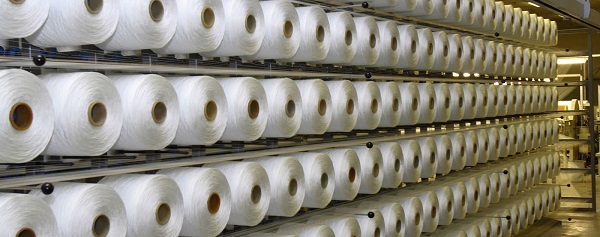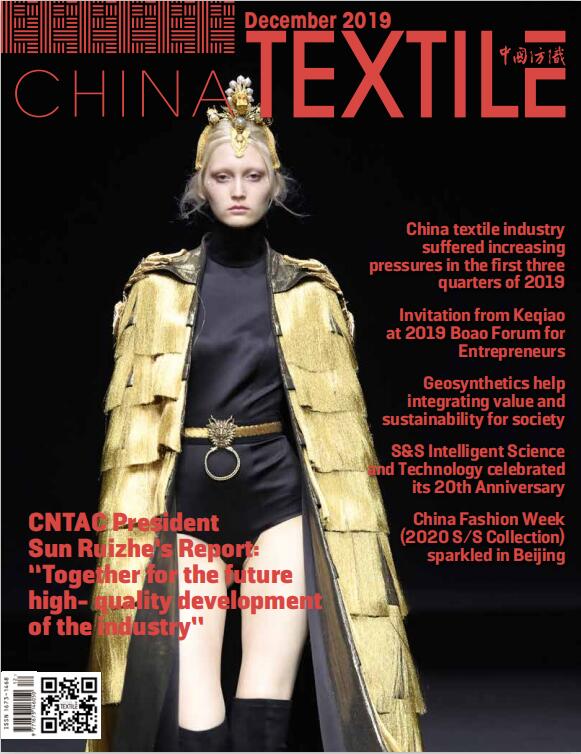China’s textile economy in 2015: Moderate but holding
Mar 07, 2016 | by
China’s textile economy in 2015: Moderate but holding
By Zhao Zihan

China’s textile industry witnessed a relatively normal economic operation in 2015: to be holding in a moderated operation, steady benefit indicators, increased industry investment, proceeding pace of industrial restructuring, steady growth of domestic demand, and the narrowed decline of continued negative growth of total exports in the third and fourth quarters at the end of last year.
Indicators: Main performance indicators maintained growth
According to the National Bureau of Statistics, the above-designated textile enterprises in 2015 saw a year-on-year increase of 6.3% in industrial added value. During the first 11 months last year, the main business revenue reached 6.371353 trillion yuan, up 5.02%, 4 percentage points higher than industry; total profit amounted to 332.612 billion yuan, growing by 6.83%, 8.7 percentage points higher than industry. Among different sectors of the industry chain, the man-made fiber industry and technical textile industry presented the fastest growth.
The rate of return on sales of the above-designated textile enterprises was 5.22%, up 0.09 percentage point; turnover of finished goods was 20.18 times/year, an acceleration of 0.82% .
Table 1 Main indicators of the industry
|
Main indicators |
Indicator value |
Y/Y changes |
|
Main business revenue |
6.371353 trillion yuan |
+5.02% |
|
Total profit |
332.612 billion yuan |
+6.83% |
|
Profit margin |
5.22% |
+0.09 percentage point |
|
Turnover of total assets |
1.55 times/year |
remain basically stable |
|
Turnover of finished goods |
20.18 times/year |
+0.82% |
|
(Operating + administrative + financial expenses) / Operating revenues |
6.07% |
somewhat decrease |
Source: National Bureau of Statistics
Investment: Industry investment continued to expand
In 2015, for the projects of more than 5 million yuan in China’s textile industry, investment in fixed assets amounted to 1.191321 trillion yuan with an increase of 14.96%, 1.59 percentage points higher over the previous year; new projects grew by 18.34%, up 18.86 percentage points over the previous year. As for the investment structure, investment in the eastern and western regions saw a higher proportion over the previous year while the central region accounted for a relatively declined part compared to last year.
Export: Total exports continued to decline
According to the Customs, the total textile and apparel exports reached 283.85 billion USD, down 4.88%, a little narrowed decline after lasting decreases for six consecutive months, 0.9 percentage point lower compared to the decline during the first 11 months last year. Meanwhile, the export volume from January to November in 2015 fell by 4.3% with the decrease growing by 2.8 percentage points over the first half of last year. In terms of export structure, from January to November in 2015, textile exports decreased by 2.53% to 104.974 billion USD while the apparel exports were 158.629 billion USD, falling by 7.64%.
Table 2 China’s textile and apparel export growth in value and volume, Jan. – Nov., 2015
|
|
Growth in value |
Growth in price |
Growth in volume |
|
Textile and apparel |
-5.67 |
-1.34 |
-4.30 |
|
Textiles |
-2.53 |
-2.38 |
-0.15 |
|
Apparel |
-7.64 |
-0.74 |
-6.95 |
Source: China Customs & China National Textile and Apparel Council Statistics Center
Domestic sales: Domestic sales growth slowed down to some extent
From January to December 2015, the national above-norm garments, shoes, and hats as well as the knit wear and textiles saw an increase of retail sales by 9.8%, 1.1 percentage points lower than the same period in 2014 and 0.9 percentage point lower than the first half of 2015. Overall e-commerce channels maintained a rapid expansion trend, from January to December, 2015, the national online retail sales of wearings grew by 21.4%, which however has seen somewhat decline since the second quarter last year, and the annual growth rate decreased 8.7 percentage points compared with the first half.
Table 3 Online retail sales of wearings
|
Online sales |
Wearings Y/Y |
|
The 1st quarter |
33.7% |
|
The 2nd quarter |
30.1% |
|
The 3rd quarter |
26.3% |
|
The 4th quarter |
21.4% |
Problems: Development was still facing protrudent pressures
Although cotton direct subsidy measures have come to effect, the follow-up influence of the previous purchasing and storage policy has not been eliminated, plus a serious decline in quality of domestic cotton, imports of cotton yarn amounted to more than 2 million tons. Therefore, it is an urgent need of the industry to make a comprehensive coordination in terms of such policies as import quota release, the State Reserved cotton delivery, cotton quality enhancement and cotton management system reform.
International market demand still remained a slow growth rate in general, which has not yet played a forceful role in driving terminal consumers. From January to November, 2015, the US textile and apparel imports in value increased by 4.32% year on year, while the imports from China only grew by 3.5%. The EU textile and apparel imports in value (converted to U.S. dollars) fell by 9% year on year, and Japan fell by 7.8% year on year.
Textile industry was facing further pressures of international competition. From January to November of the previous year, China’s proportion in Japan’s total textile and garment import value saw a decline of 3 percentage points over the same period last year, while there was a decrease of 0.2 percentage point and 0.7 percentage point compared to the same period last year in the United States and EU respectively from January to October last year. However, at the same period, the proportions in Vietnam, Bangladesh, and Indonesia enjoyed somewhat increases.








